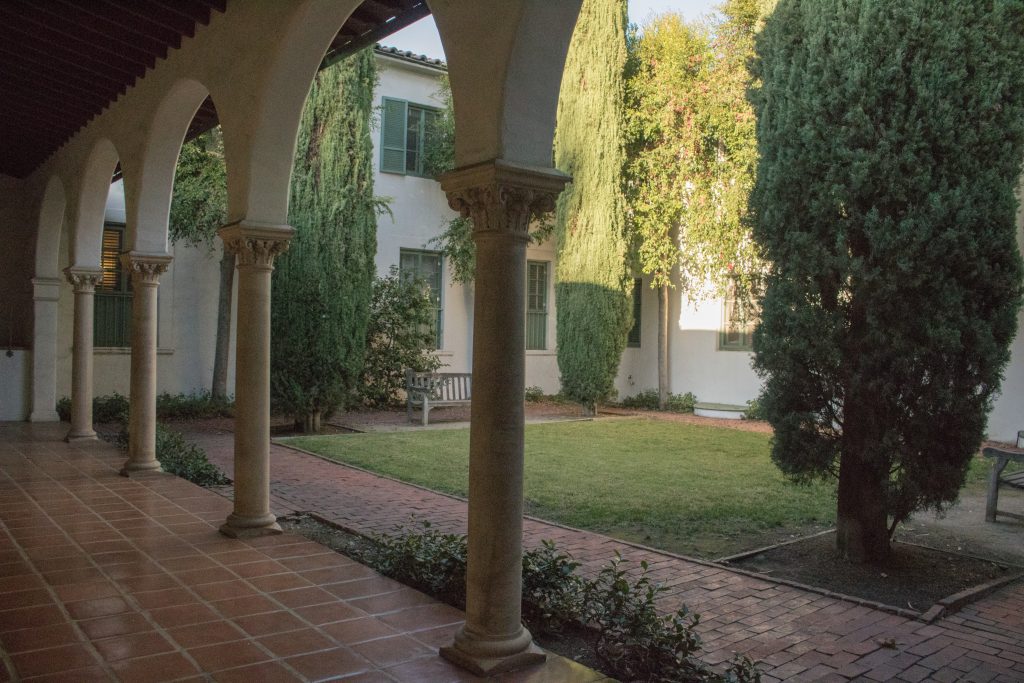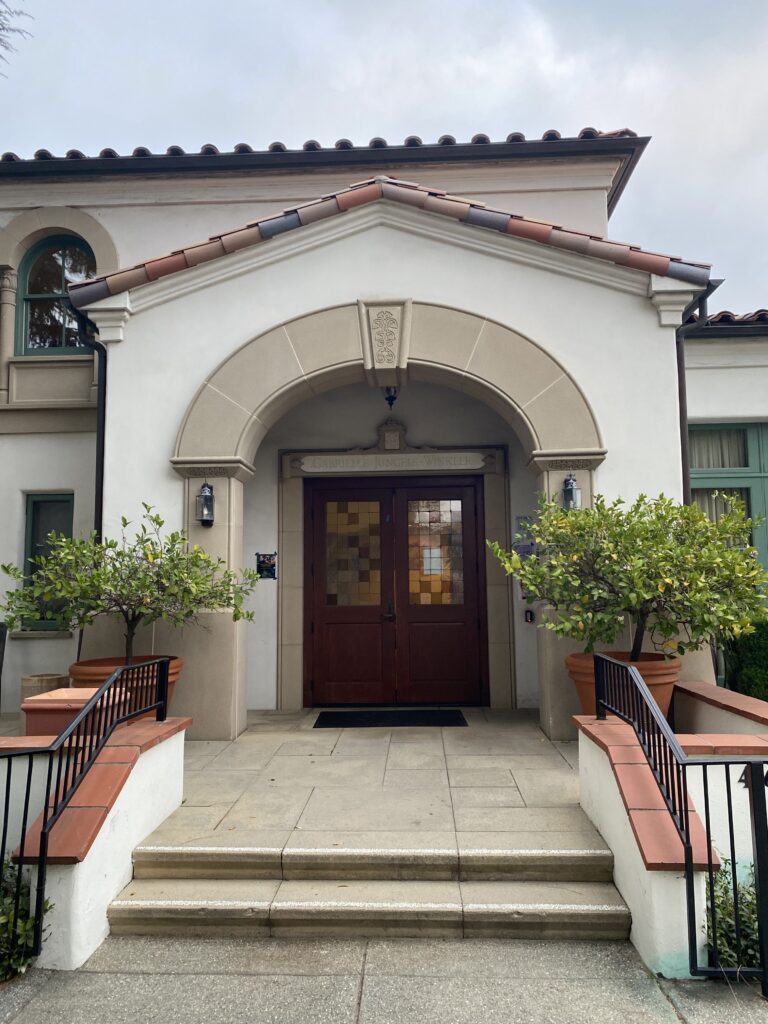Theodora Helgason ’22
Courtyards operate in this in-between place between nature and architecture. They are contained by the walls of man, yet inside those walls are contained gardens of green. This multi-faceted meaning of the courtyard turns out to be important to Scripps’ identity as a college.
If there is one thing that Scripps has an abundance of, it is courtyards. So how does this abundance of courtyards shape Scripps?
“It [Scripps] is a gem not only because of its fine architecture, but because the campus was planned as an artistic whole,” according to a walking tour pamphlet published in 1982 entitled “Walking Tour: The Claremont Colleges.” “The buildings and landscape at Scripps are not separate entities; they are carefully and consistently linked through the use of natural geographic features, walks and visual axes.”
This seamless unity between the outdoor and indoor spaces on campus is also highlighted in the February 1948 edition of “The Scripps College Bulletin”. According to the Bulletin, “the total plan of the campus has always called for artistic connection between buildings and landscape. This has led to fine care in linking walks and vistas to architectural approaches.”
According to “Architectural Planning of the American College,” Scripps was intended to be more like a home in comparison to the architecture of most traditional masculine institutions.
Scripps has an abundance of courtyards because courtyards are apparently considered to be architecturally feminine. Perhaps that can be attributed to the natural sphere being associated with womanhood and “manmade” institutions being rigid and traditionally male-dominated spaces.
Scripps’ architecture was meant to depart from the status quo of institutional and masculine architecture and this meant building courtyards and constructing a multitude of outdoor spaces.
Toll Hall’s courtyards are especially notable because the hall was the first building constructed on the campus. From the beginning, Scripps has valued the beauty of its courtyards.
Scripps’ courtyards are actually quite diverse in their botanical origins. Browning Hall’s courtyards are named for the foreign fields that inspired these gardens.
“The central court in Ellen Browning Hall was called Mañana Court because the original planting, with the exception of the Eucalyptus tree, was all native to Mexico,” writes Professor Bruce A. Coats in Guide to the Scripps College Campus. “One of the small courts is called Turtle Court, so named because of the turtle fountain in it, and another court on the north side is called the Japanese Garden since all of the original planting was native to Japan.”
Naming Scripps’ courtyards after the natural beauty that they envelop seems to be a Scripps tradition in its own right. Clark Hall’s Olive Court, for example, was named for an olive tree that shades a corner of the courtyard.
The Scripps gardens have also been involved in protest throughout the history of the college. In 1936, Scripps students protested to get the central quadrangle grassed.
“When the decision was made in 1968 to construct the Humanities Building on this site, many students and alumnae protested the proposed destruction of the gardens, especially the Olive Grove. In May 1968, students occupied the trees, refusing to allow them to be cut down,” wrote Coates.
Like the courtyards, the Margaret Fowler Garden took diverse inspiration from foreign gardens. According to Coats, the architect’s sketch of the proposed garden was sent to many friends of Mrs. Fowler including to France and Hawaii to ask if they would like to contribute to the planting of the garden. “Responses were generous and worldwide.”
According to the October 1928 edition of The Scripps College Bulletin, “Through the quick responses of the eye the Scripps student is constantly reminded that the loveliness surrounding her is not her private egoistic possession. It is hers as a member of the groups; her so far as she enters into the life of the group; hers only in the spirit of fellowship. The courts of Toll Hall are the parts of it where the architect has given rein to his sense of beauty, and these courts are common property of the fifty young women who temporarily possess this hall.”
The beauty of the Scripps campus is a shared one. Perhaps what we can learn about Scripps from its courtyards is that Scripps takes inspiration for its outdoor spaces from around the world. The history of our land also tells us that Scripps students have always been activists and that activist history is also intertwined with the outdoor spaces of the college.





